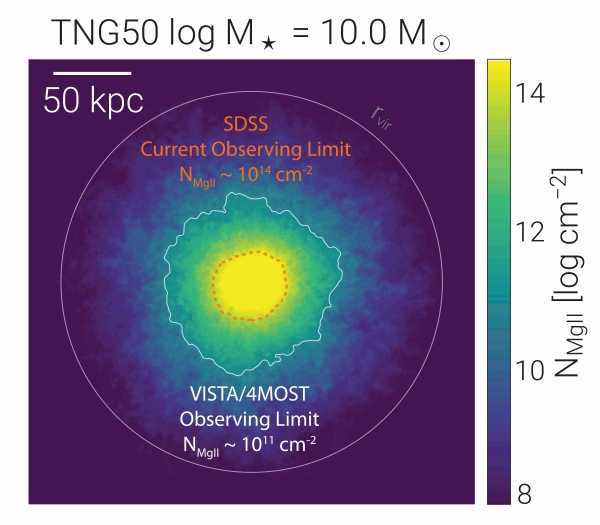Thesis Topic: Transform our Understanding of the Baryon Cycle with High-Resolution Quasar Spectroscopy (ByCycle)
Thesis Supervisor: Celine Peroux
Abstract
The term baryons refers to the normal matter of the Universe. Surprisingly, only a minority of this normal matter (< 10%) can be probed by observations of starlight from galaxies. The ByCycle project aims to study the remaining majority of the baryons traced by the intergalactic gas. To this end, ByCycle will use the powerful synergy of absorption and emission diagnostics by observing a large sample of background quasars observed with VISTA/4MOST to probe the circumgalactic medium of foreground objects in the same sky regions. The objective of the 2.8-million fibre-hour ByCycle project is ultimately to characterise the physical processes by which gas changes phases and travels into, through, and out of galaxies. The goals of the PhD project will be to identify and characterise unprecedented large sets of MgII absorbers and relate them to the physical properties of foreground objects. Such a study is essential to our understanding of the growth of structure in the Universe.
Collaborators: The PhD supervisory team includes Andrea Merloni (MPE).

Figure Caption: Illustris TNG50 simulations of the circumgalactic metal distribution (D. Nelson, private communication). This is a 2-D stack of 200 z=0.5 galaxies alike the ones targeted by the survey. The red contour illustrates the current MgII column density detection limit from SDSS (Anand+21), while the white contours corresponds to MgII column density limit of the VISTA/4MOST survey. The white circle shows the r200 radius. The project will provide 3 orders of magnitude improvements in the MgII column density probed in the extended circumgalactic medium of galaxies thanks to its large multiplexing capability and R=20,000 high-spectral resolution.

